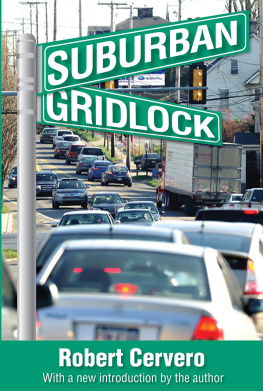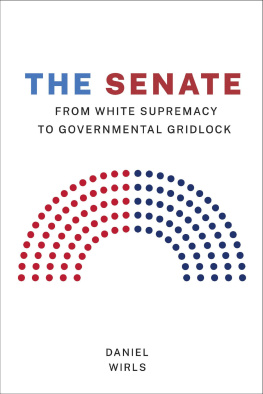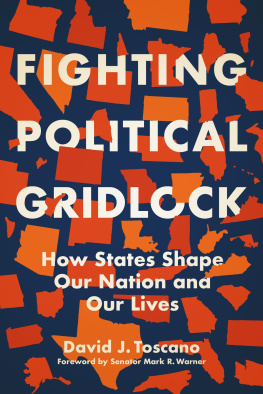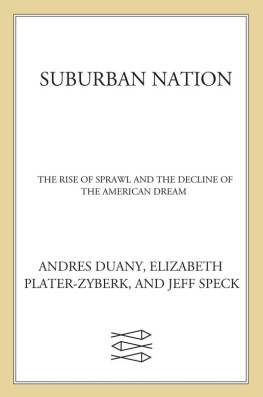The transportation planning profession has historically focused its attention and resources on downtown access and mobility problems. Indeed, since the first appearance of the motorized four-wheel buggy, the overwhelming majority of urban transport investmentsfrom minor arteries to rapid transit systemshave sought to accommodate the convergence of regional trips into spatially constrained downtown cores. Suburbs, and places beyond, on the other hand, have long been considered havens for travel, free from frustrating traffic jams and ideal for leisurely weekend excursions. To a large extent, transportation planning in suburbia has over the years involved little more than adding new projects to five-year capital improvement programs for the pouring of concrete and pavement along developing corridors.
Within the past five to ten years, however, traffic conditions along many fringe corridors have begun to change markedly for the worse. Recent surges in white-collar employment triggered by the relocation of downtown offices to outlying locales have swamped many suburban thoroughfares with traffic they were never designed to handle. As far as 20 miles from main downtown cores of expanding metropolises like Houston, Los Angeles, and Washington, D.C., rush-hour traffic has gone from freeflow to gridlock conditions in a span of five years along some stretches. The situation has reached such epic proportions that some watchful observers have issued warnings that congestion could become the number one problem within the suburbs as well as the transportation field by the 1990s and into the twenty-first century unless drastic action is taken.
For most Americans, the idea of congestion in the suburbs almost seems like a contradiction in terms. Suburbia has come to represent an important slice of Americana over the post-WWII era, a place where families can maintain a rural-like lifestyle while residing close enough to big cities to enjoy the same occupational choices as urban dwellers. The image of the suburbs as predominantly bedroom communities is forevermore being redrawn by the steady influx of offices and businesses, and the urban kinds of problems they bring along. As Americas suburbs continue to mature, traffic congestion, pollution, and other unpleasantries are apt to become a way of life that both planners and transportation professionals must quickly learn to deal with.
This book explores the scope of mobility and congestion problems posed by rapid office and business growth on Americas urban fringes. Emphasis is placed on illuminating the many behavioral, institutional, and logistical dilemmas planners can expect to face in battling congestion in suburbia. The potential roles that various design, land use, and management strategies might play in attenuating traffics presence and protecting natural environments are also closely examined. Because so many large-scale developments are currently being discussed, planned, and built in suburbia, considerable attention is given to highlighting what are considered to be exemplary design and management practices presently underway that others might follow. Above all, this book aims to call the looming mobility crisis facing our suburbs to the attention of the nations developers, city planners, and transportation professionals in hopes of stimulating both dialogue and creative responses.
Much of the inspiration for this manuscript has come from the rich body of writings by students of suburban problems and issues over the past 25 years. While suburbia has only begun to capture the serious attention of transportation planners since the mid-seventies, important groundwork on employer and developer involvement in safeguarding suburban mobility has been laid in recent years that this work was able to build upon. Some of the ideas and case accounts presented in this book were drawn from panel discussions and workshops that took place at the conference on Mobility for Major Metropolitan Growth Centers held in Los Angeles in November 1984. Several hundred developers, politicians, federal administrators, planners, and scholars attended this conference, arriving at a general consensus that protecting suburbs from downtown-like traffic jams will become an increasingly difficult challenge that deserves priority attention on all fronts.
I owe debts of appreciation to many for their support of this work. The Institute of Transportation Studies, University of California, Berkeley, provided both financial backing and outstanding staff assistance. Julia Perez and Charlie Anderson collaborated as research assistants, helping with the collection and analysis of both census and survey information as well as with the conduct of several case studies. I am also thankful to the many local and regional transportation planners, too numerous to list here, who went beyond the call of duty in assisting us gather supporting materials for this work. I am particularly grateful to the dozens of developers and private individuals who gave their time unsparingly and shared their many insights on a wide array of suburban mobility issues during field interviews. Without their assistance and commitment to improving transportation in suburban growth settings, this work could never have been completed. Finally, my heartfelt thanks to my wife Monty ne for sacrificing a summer while I wrote this manuscript.
Robert Cervero
August 1985













